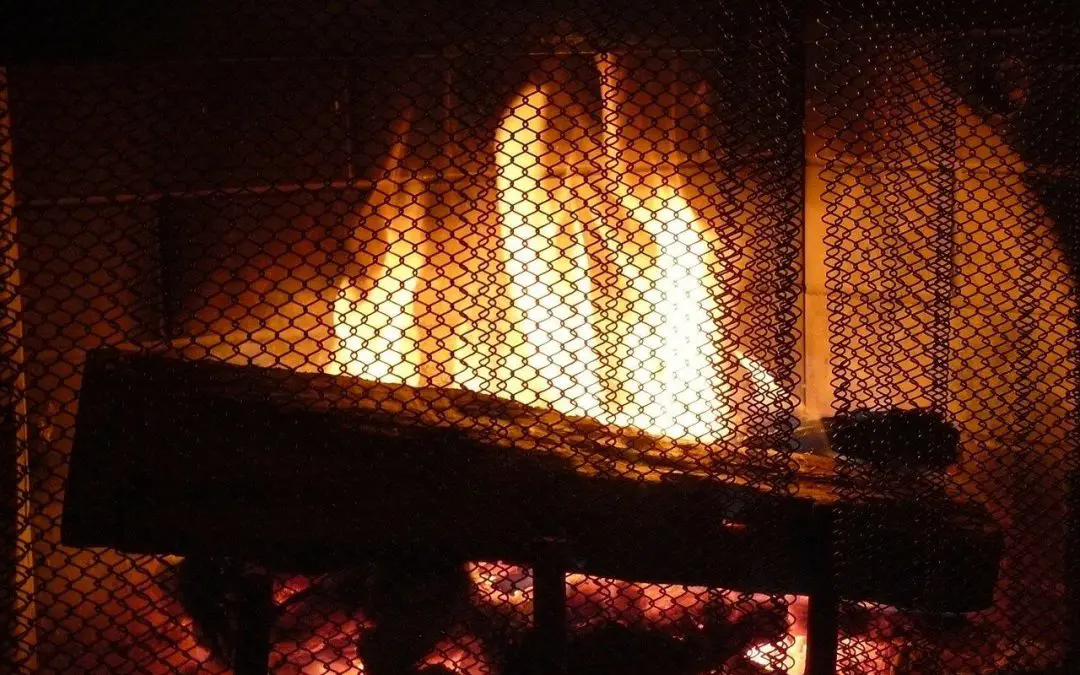As the cool weather approaches, there’s nothing more comforting than cozying up by a warm fireplace. However, before lighting your first fire of the season, it’s essential to ensure your fireplace is in optimal condition. Proper maintenance ensures safety and improves efficiency. Here’s a step-by-step guide on how to prepare your fireplace for use, providing a warm and safe home all winter long.
1. Schedule a Professional Inspection
Before you do anything, schedule a professional chimney inspection. A certified chimney sweep can identify any potential issues like blockages, creosote buildup, or structural damage that may compromise the safety of your fireplace. The National Fire Protection Association recommends having your chimney inspected at least once a year. A thorough inspection will also check for damage to the chimney cap, flashing, and flue lining. If there are cracks, water damage, or critters nesting inside, they’ll advise on the necessary repairs.
2. Clean the Fireplace and Chimney
After inspection, the next step is cleaning. While professionals typically handle chimney cleaning, you can clean the fireplace yourself. First, remove any ashes, soot, and debris from the firebox. Use a sturdy fireplace shovel to scoop out the ashes, and then vacuum the remaining dust with a shop vac. Pay special attention to the fireplace walls, which may have soot buildup. A stiff-bristled brush and a solution of warm water and dish soap can effectively clean the soot off.
For gas fireplaces, turn off the gas and inspect the logs and burners for dust or debris. Use a soft cloth or a vacuum attachment to clean them.
3. Check the Damper When You Prepare Your Fireplace for the Season
The damper is a key component in your fireplace’s ventilation system, controlling airflow and preventing drafts when the fireplace is not in use. Before lighting any fires, make sure the damper opens and closes smoothly. It should be free from rust, dirt, and any obstructions preventing it from sealing correctly. A damper that doesn’t function well can cause smoke to enter your home or allow cold drafts when the fireplace is not in use. Lubricate it if necessary to ensure it operates easily.
4. Inspect the Chimney Cap
Your chimney cap is the first line of defense against the elements, debris, and animals. Over time, caps can become damaged or clogged, reducing the efficiency of your fireplace and creating fire hazards. Climb up to the roof or hire a professional to inspect the chimney cap for signs of damage. Ensure it’s securely fastened and free of any obstructions that prevent smoke from escaping.
If your chimney doesn’t have a cap, now is a great time to invest in one. Caps keep rain, leaves, and animals out, but they also prevent downdrafts, which can blow cold air into your home.
5. Test Smoke and Carbon Monoxide Detectors
Fireplaces, while cozy, can be hazardous if not used correctly. As you prepare for winter, don’t overlook the importance of smoke and carbon monoxide detectors. These devices are crucial for ensuring you’re alerted in case of a malfunction, such as improper ventilation or chimney blockage.
Replace the batteries in both detectors and test each to ensure they work properly. Place detectors near your fireplace and in other key areas of your home, like bedrooms and hallways. If you don’t have these detectors installed, consider doing so before using your fireplace.
6. Stock Up on Proper Firewood While You Prepare Your Fireplace
The type of firewood you use plays a significant role in the efficiency and cleanliness of your fireplace. Seasoned hardwoods like oak, maple, and birch are ideal for burning because they produce less creosote, burn hotter, and generate more heat. Avoid softwoods like pine, as they burn quickly and can cause more creosote buildup in your chimney.
It’s essential to let firewood dry for at least six months before burning. Fresh or “green” wood contains too much moisture, leading to inefficient burning, excess smoke, and increased creosote buildup. Store your firewood in a dry, covered area to keep it seasoned and ready for use throughout the winter.
7. Examine the Fireplace Surround
While preparing your fireplace, remember to check the surround, including the hearth and mantel. Look for any cracks, loose bricks, or signs of wear and tear that could pose a safety hazard. If you have a stone or brick fireplace, ensure the mortar is intact. Repair any damage you find, as even small cracks can allow heat to escape, potentially damaging your home’s structure.
8. Install a Fireplace Screen
A fireplace screen adds an extra layer of protection, preventing stray embers from flying into your living space and reducing the risk of accidental burns or fires. If you don’t already have a screen, invest in one made of metal mesh or tempered glass. These durable materials allow heat to radiate into the room while keeping sparks contained.
For gas fireplaces, glass doors or screens help reduce drafts when the fireplace isn’t in use, improving energy efficiency and keeping your home warm.
9. Prepare Your Fireplace Tools
Whether you use a wood-burning or gas fireplace, having the right tools on hand makes operation easier and safer. Typical fireplace tools include a poker, tongs, a shovel, and a broom. Ensure each tool is in good condition before lighting the first fire. Rusty or worn tools can be dangerous, so replace them with new ones if necessary.
In addition, consider having a fire extinguisher nearby. Even with the best preparations, accidents can happen, and it’s important to respond quickly in an emergency.
10. Light the First Fire Safely
Once your fireplace and chimney are thoroughly inspected, cleaned, and ready for use, you can finally enjoy the warmth and ambiance of your first fire. Start small by lighting a few pieces of seasoned wood to test the fireplace’s ventilation and performance. Keep the damper open, and ensure the smoke is venting properly through the chimney.
As you enjoy your fireplace throughout the season, remember to continue basic maintenance, like regularly clearing out ash, keeping your firewood dry, and inspecting the damper and chimney cap for any signs of wear.
Taking the time to properly prepare your fireplace before winter will ensure a safe and enjoyable experience for you and your family. From professional inspections and cleaning to stocking up on the right firewood and testing detectors, these essential steps are key to maintaining an efficient and safe fireplace. With the right care and attention, you’ll be able to enjoy a warm and cozy atmosphere all season long.
Buyer’s Edge provides inspection services for homebuyers and sellers in Western North Carolina. Contact us to schedule an appointment.

